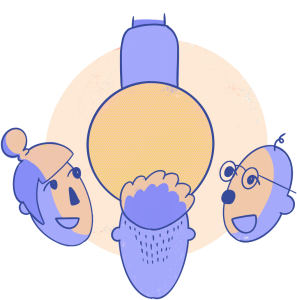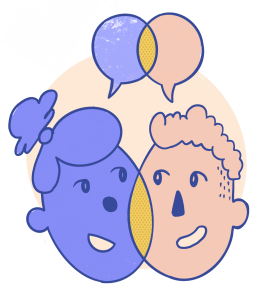On paper, customer-centric design and agile software development are a perfect match: agile teams thrive on creating customer and business value, and designers offer concrete methods for understanding customers and facilitating change. But even though dozens of frameworks and methodologies have been created to organize teamwork and streamline processes, the reality is far from a honeymoon. Teams are constantly facing the same challenges and people feel things could be better.
When we talked to 60 people in 30 different projects, we found that often:
- Designers feel burdened by the number of mixed tasks. Too little resources combined with poor coordination turns design into a bottleneck that threatens the agility of the whole team.
- Too little up-front design work causes hot fixes which stress everyone, break the flow of work, and lead to case-specific solutions that do not support the bigger picture.
- Business goals miss clarity and focus, leading to a constantly shifting direction which frustrates teams. They deliver features instead of value, which reduces autonomy, motivation, and commitment of the team.
- Customer-centricity is not embedded in the team culture. The responsibility for customer value is not shared amongst the whole team but falling on the shoulders of already exhausted product managers and designers.
- Agile is not deeply understood but just “acted out”. Teams try to adopt existing agile frameworks straight off-the-shelf even if they seldom fit for them. Following a framework without evolving together is not agile, really.
We can make design and agile work better together
There’s a lot of value to be grabbed here. People and teams could be happier and more committed (which by the way is the key to success). Organisations could create better products faster and get more value for their investment to design and development overall.
Instead of being on the outskirts of development teams, designers could facilitate the team and the surrounding organisation to improve. Better armed, they could create disproportionate impact. But just adding a designer in the team doesn’t guarantee you all the benefits: there needs to be both depth and width in design capability and customer centricity. And most importantly, design and development need to work toward the same goals and share processes, methodologies, tools, and team culture.

Free relationship therapy (in a book form)
We asked designers, developers, product managers and other agile folk about challenges in design collaboration in agile teams. Now we’ve collected the findings into a workbook. Through examples and tips, the workbook helps teams to understand their challenges and to improve their ways of working together. Hopefully it inspires you to develop the best approach for your team, so that you can create world-class products and services for your customers and stay happy and healthy doing so!
We’d also love to have a chat with you to share, care & learn more together.



